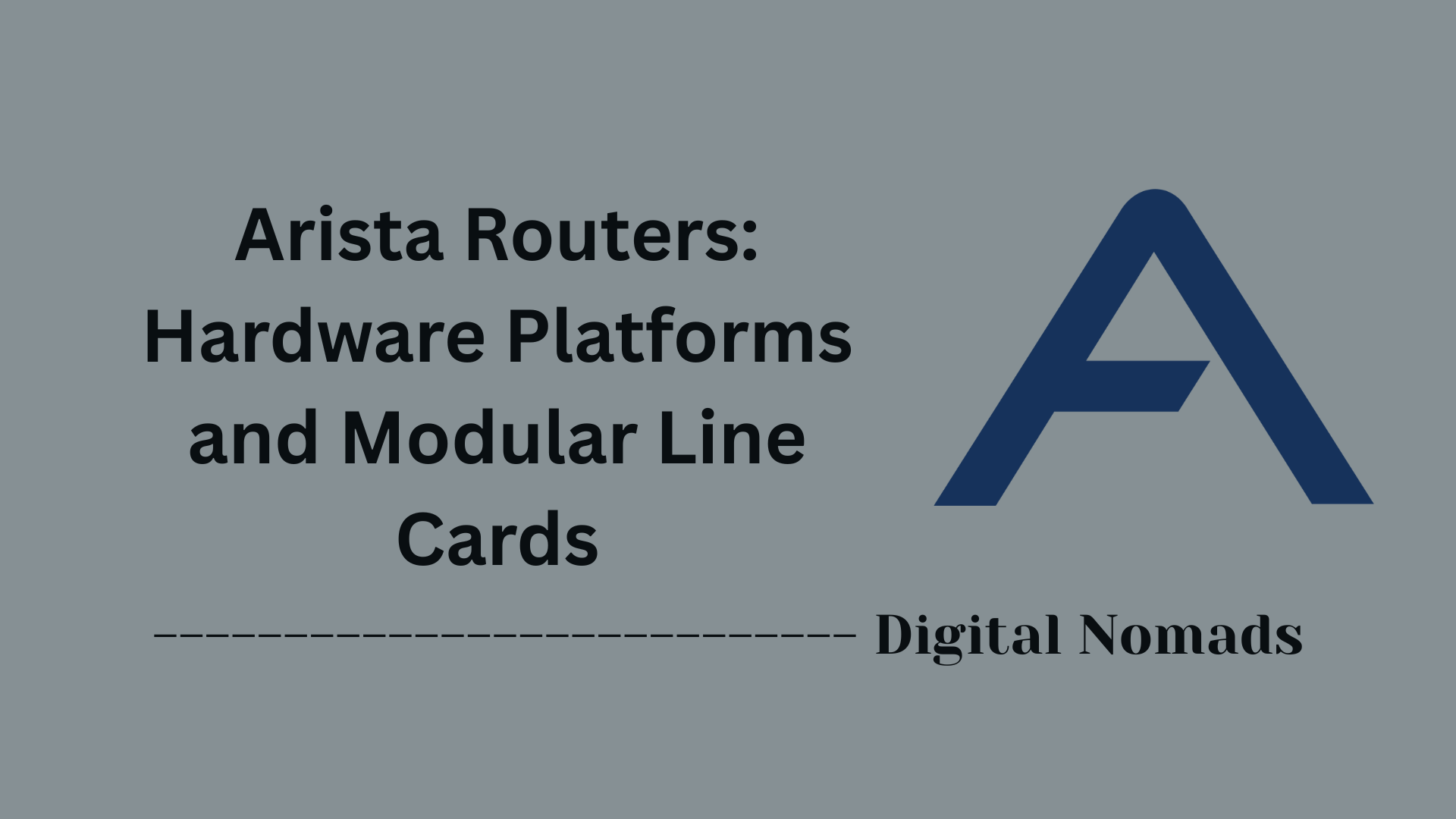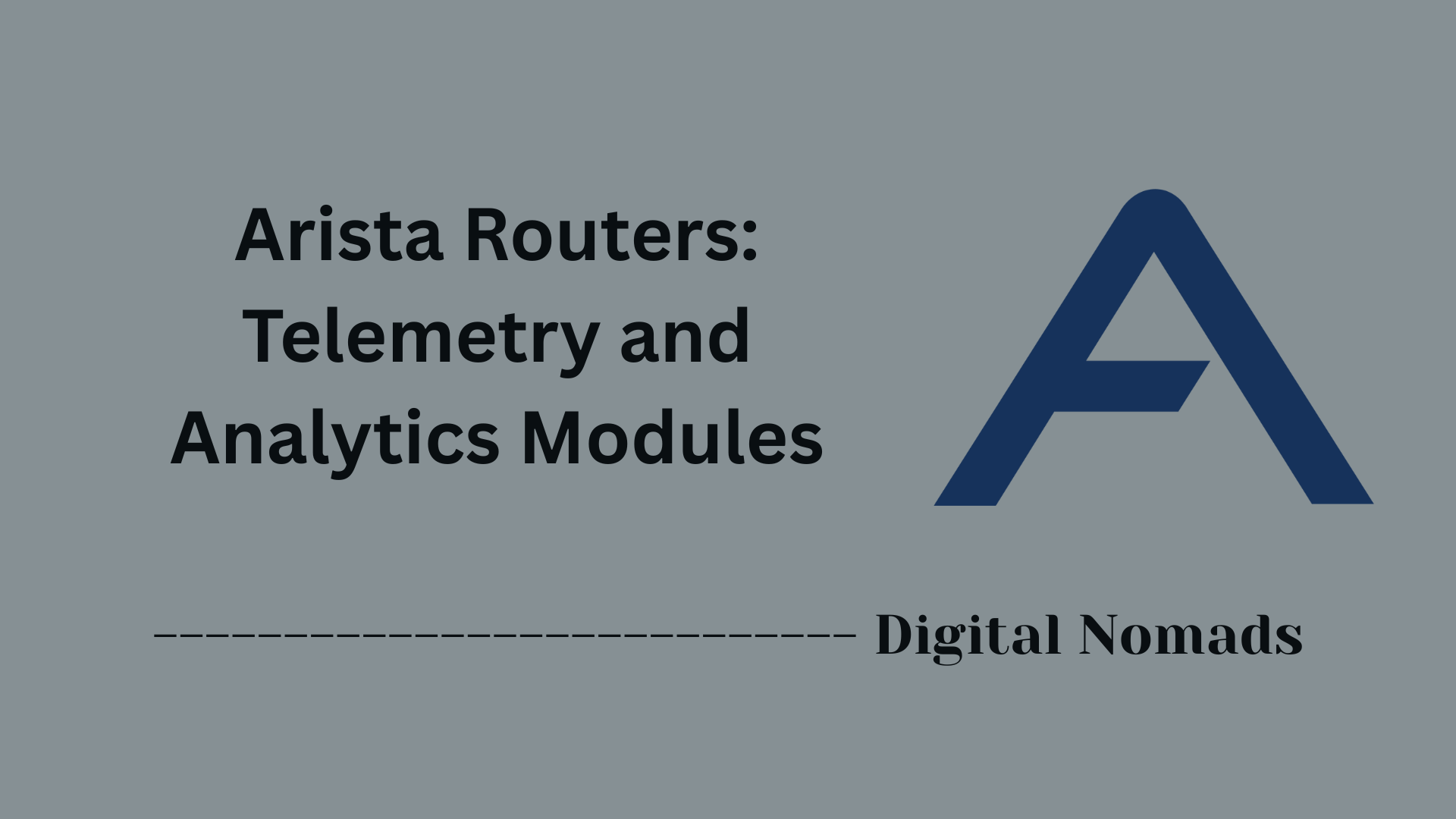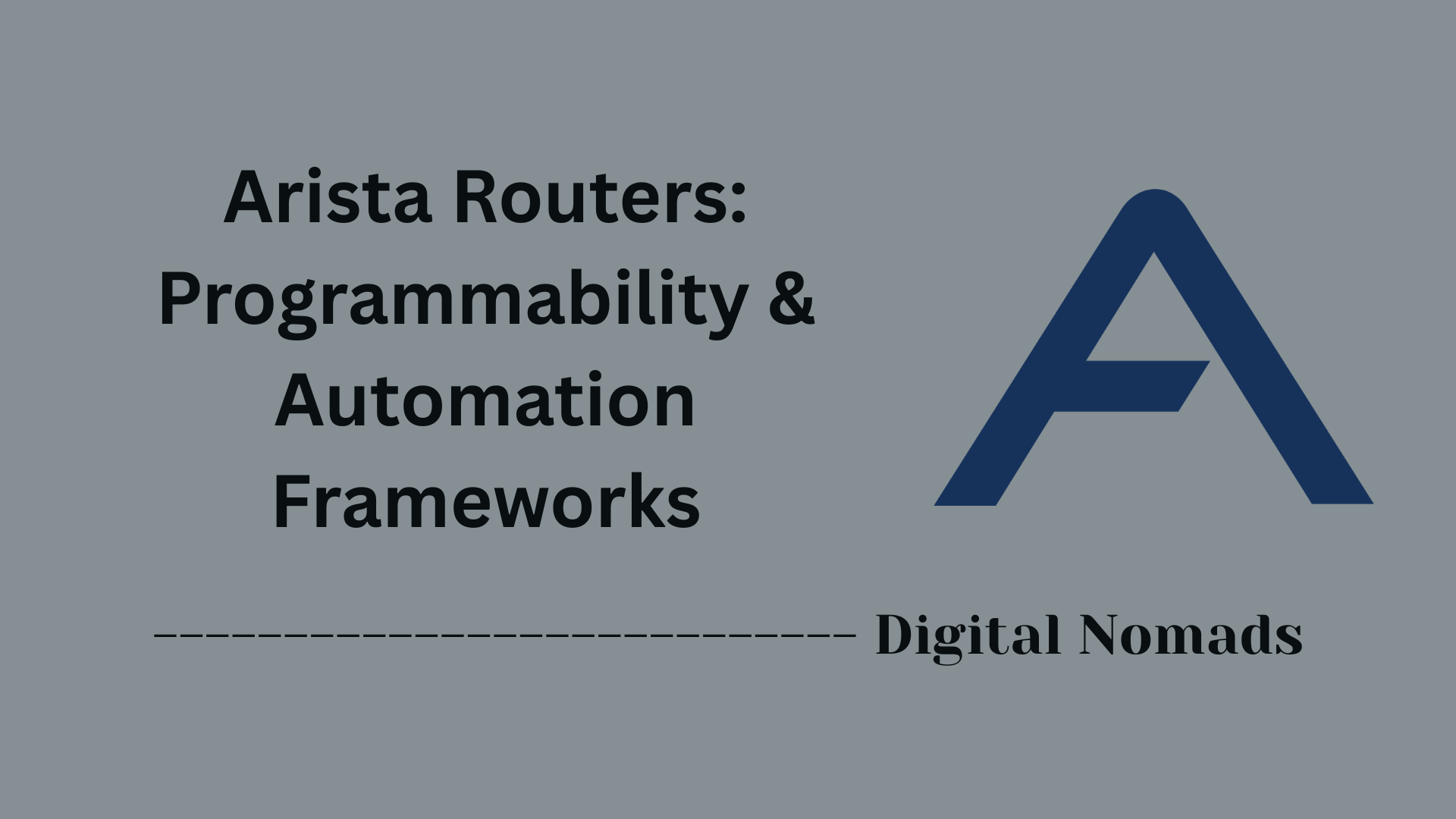Arista Switches: Deep Dive
Everything You Need to Know
Table of Contents
- Overview
- Core Components
- Prerequisites
- Configuration
- Validation
- Troubleshooting
- Conclusion
Overview: Arista Switches – Deep Dive
Arista switches are a family of high-performance network switches designed for data centers, enterprise networking, and cloud computing environments. Known for their scalability, programmability, and robust feature set, these switches are widely adopted by organizations aiming for resilient, efficient, and automated network infrastructures.
What Are Arista Switches?
Arista switches are hardware devices built to manage and direct traffic across networks. They are best known for running Arista’s proprietary Extensible Operating System (EOS), an open and Linux-based OS that provides powerful programmability for network automation, monitoring, and integration with third-party tools. These switches support a wide range of networking protocols and offer high port density, low-latency switching, and advanced security features.
Why Do You Need to Know About Arista Switches?
Understanding Arista switches is essential for several reasons:
- Industry Leadership: Arista is a leading vendor in the data center networking space, powering some of the world’s largest cloud and enterprise infrastructures.
- Automation and Scalability: Their switches allow for large-scale automation through APIs, event-driven scripting, and integration with network orchestration tools, dramatically simplifying management and reducing the risk of human error.
- High Performance: Arista products are engineered for low latency, high throughput, and robust reliability, making them ideal for mission-critical environments.
- Network Visibility: They offer deep visibility into network traffic, enabling better monitoring, diagnostics, and proactive troubleshooting.
- Open Standards: EOS promotes interoperability and flexibility, empowering organizations to avoid vendor lock-in and quickly adapt to evolving technologies.
How Do Arista Switches Work?
The foundation of Arista’s capability lies in EOS. This modular, programmable platform separates the hardware forwarding plane from the software control plane, enabling a flexible and resilient architecture. Here’s how it works:
- Centralized Management: Network admins can manage multiple switches centrally using consistent CLI, GUI, or RESTful APIs.
- Programmability: EOS allows users to automate configuration, monitoring, and changes through Python scripts, event handlers, and cloud-based tools.
- High Uptime: In-service software upgrades and self-healing capabilities help maintain continuous operation, even during updates or failures.
- Integration: Arista switches integrate seamlessly with major cloud platforms, virtualization solutions, and security tools, enabling hybrid and multi-cloud networking.
By leveraging Arista switches, organizations can build highly performant, flexible, and future-proof networks that are ready for the demands of modern IT and business operations.
Core Components of Arista Switches
These are the fundamental elements that power Arista switches and make them highly scalable, programmable, and reliable in modern network environments:
- Extensible Operating System (EOS): A Linux-based network operating system that runs on all Arista devices. It offers programmability, modularity, and a single binary image across the entire switch portfolio. EOS is the brain behind Arista's software-defined networking capabilities.
- CloudVision: Arista's centralized network management and automation platform. It provides a global view of the network, real-time telemetry, configuration management, compliance enforcement, and integration with third-party tools via APIs.
- Arista 7000 Series Switches: High-performance, data center-grade switches designed for leaf-spine architectures, offering low latency, high throughput, and dense port configurations for 1G to 400G networking.
- Programmable APIs & Event-Driven Automation: EOS supports native APIs, such as eAPI (JSON-RPC), and event handlers, allowing for custom scripts, automatic responses to network changes, and seamless orchestration with external automation platforms like Ansible or Terraform.
- State Sharing and In-Service Software Upgrade (ISSU): EOS's unique architecture allows for stateful updates across switch clusters, enabling patches or upgrades to occur without disrupting network traffic or requiring downtime.
Prerequisites for Deploying Arista Switches
Before deploying Arista switches in your network, ensure you have the following prerequisites in place:
- Networking Knowledge: Basic understanding of networking concepts (switching, routing, VLANs, subnets, and physical cabling) is required for effective configuration and troubleshooting.
- Environment Preparation: A rack or suitable space with adequate power, cooling, and physical security for data center-grade switches.
- Access to Console/Management: Console cable or out-of-band management access to perform initial switch setup and configuration.
- Connectivity Requirements: Appropriate cables (fiber or copper), transceivers, and network interface cards (NICs) that are compatible with your selected Arista model.
- Software & Licensing: Access to Arista EOS images, the required licensing, and a registered account on the Arista Support Portal if advanced features or updates are needed.
- IP Addressing Plan: Predefined IP addresses for management interfaces, VLANs, and any routing protocols you intend to configure.
- Documentation & Topology Plan: Updated network diagrams and documentation for both physical and logical topology to guide deployment and avoid configuration errors.
Configuration of Arista Switches
This section walks through the essential steps to configure an Arista switch for basic network deployment and management:
- Initial Access: Connect to the switch via console port (serial cable) or through out-of-band management (Ethernet management port). Use a terminal application (such as PuTTY or Tera Term) to access the command-line interface (CLI).
-
Basic Setup and Hostname Configuration:
Enter privileged EXEC mode, set the device hostname, and configure login credentials. For example:
enable
configure terminal
hostname Arista-Switch
username admin privilege 15 secret yourpassword -
Management Interface Configuration:
Assign an IP address to the management interface so you can remotely access the switch:
interface Management1
ip address 192.168.1.10/24
no shutdown
exit -
VLAN and Interface Setup:
Create VLANs and assign interfaces to them. For example:
vlan 10
name Users
interface Ethernet1
switchport mode access
switchport access vlan 10 -
Saving Configuration:
Save your configuration to ensure it persists after a reboot:
write memory - Optional: Enable Advanced Features: Configure routing protocols (such as OSPF or BGP), port-channels, or automation via Arista EOS CLI or eAPI, depending on the scale and requirements of your deployment.
Validation of Arista Switch Configuration
After configuring your Arista switch, it’s essential to validate the setup to ensure that everything is functioning as intended. Use the following steps and commands to verify the configuration:
-
Check Interface Status:
Verify the operational status of physical and logical interfaces:
show interfaces status
This will list the interface names, link status, speed, VLAN assignment, and port description. -
Verify VLAN Configuration:
Ensure that VLANs are correctly created and assigned:
show vlan
This will display VLAN IDs, names, and associated ports. -
Ping Test:
Validate IP connectivity from the management interface to another device (like your default gateway):
ping 192.168.1.1
A successful ping response confirms layer 3 connectivity. -
Confirm Management Access:
Test remote access to the switch using SSH or HTTPS:
ssh admin@192.168.1.10
This checks that your IP and credentials are correctly configured for remote management. -
Display Running Configuration:
Review your current live config to confirm all applied changes:
show running-config
Useful for verifying hostname, VLANs, interface settings, user accounts, and routing protocols. -
System Health Monitoring:
Check the status of system resources like CPU and memory to ensure the switch is stable:
show processes top once
show version
Troubleshooting Arista Switches
Effective troubleshooting helps maintain uptime and quickly resolve issues with Arista switches. Here are common troubleshooting steps and helpful commands:
- Physical Connectivity Checks: Confirm that all cables, transceivers, and power connections are properly secured and the correct LEDs (link/activity) are active. If a port is down, reseat cables and transceivers.
-
Interface Troubleshooting:
Use the following to check interface details and error counters:
show interfaces Ethernet1
show interfaces counters errors
This helps identify issues like physical errors, CRCs, or excessive drops. -
VLAN & MAC Table Issues:
Verify correct VLAN membership and check the MAC address table if devices cannot communicate:
show vlan
show mac address-table -
Management Access Problems:
If unable to access the switch remotely, confirm management interface config and network path. Test with:
show management interface
ping <gateway_IP>
ssh admin@<switch_IP> -
Configuration Rollback:
If a recent change caused issues, roll back to a previous configuration snapshot:
configure replace flash:startup-config -
System Logs & Diagnostics:
Inspect logs and system health for deeper insights:
show logging
show tech-support
show version - Contact Support: If problems persist, collect logs and command outputs, then contact Arista Support with a detailed problem description.
Conclusion: Wrapping Up the Arista Switches Deep Dive
Throughout this deep dive into Arista Switches, we’ve explored the essential elements that make them one of the most forward-thinking and reliable network solutions in the market today. Let’s take a moment to recap the key takeaways:
- Overview: Arista switches are built for modern, scalable, and automated networks, powered by their unique Extensible Operating System (EOS) and designed for performance, agility, and resilience.
- Core Components: We covered the fundamental building blocks like EOS, CloudVision, programmable APIs, and high-performance hardware that make Arista’s networking solutions truly stand out.
- Prerequisites: Before deployment, it’s important to have a clear understanding of networking principles, proper infrastructure setup, access credentials, and a well-documented network plan.
- Configuration: Step-by-step configuration included setting up a hostname, management IP, VLANs, interfaces, and saving configurations—all designed to get your switch online safely and efficiently.
- Validation: We demonstrated how to verify configurations using key CLI commands to test interfaces, VLANs, IP connectivity, and overall system health.
- Troubleshooting: Practical guidance was offered on how to identify and fix common network issues using diagnostic commands, examining logs, and restoring stable configurations if needed.
As you continue building or expanding your network infrastructure, Arista switches offer a powerful foundation that combines performance with flexibility, making them ideal for both enterprises and cloud environments.
Thanks for sticking with us through this Arista Switches Deep Dive! Whether you're a seasoned network engineer or just getting started with data center fabric design, we hope this guide has provided valuable insights to support your journey.
👋 Until next time—stay connected and keep scaling!




